There are as many principles of planting as there are types of perennials. As you buy up the greenhouse or forage in your neighbour’s gardens, consider these thoughts in planning your perennial gardens:
- Think curvy beds following along the length of a space. Avoid sharp edges like rectangles. Sharp edges are unpleasant to the eye; whereas, curvy beds go on and on. People like to walk irregular paths, paths that draw views toward an endpoint, toward a mountain view, or a water feature, a specimen tree or a bench. And if you can reach across, you have easy access to reaching weeds (so not more than 3 feet wide). I personally like to see some garden beds wider, as I’m fond of a cottage look, but it requires me to walk into the bed.
- You can always pull something out of the ground later if you must but first study gardening magazines to decide what perennials you like. Or Pinterest. Pinterest is useful, and inexpensive. When you see something you like, decide what element it is in that photograph that you like. Incorporate it into your design.
- Place the tallest plants in the back of the border, then work downwards in height, ending with the shortest plants around the edge of the front border. I’ve generally done this, but you can’t tell yet, because nothing is full grown in my very new gardens. So research your plants before planting.
- Don’t be afraid of using your favourite plants over and over and over. I like a swathe of lavender that create a sea of colour. Penstemon is lovely too, as seen in the above photograph, but the deer find it enticing, so I won’t sprinkle it too far and wide. Assume you can plant multiples of the same plants but think planting in odd numbers like 3, 5, 7. Perfect symmetry looks too ‘perfect’ in a garden.
- Expect perennials take two to three years to grow full size. Everyone wants a robust garden right off the top, but that is more costly and if you are planning to live in a home for a few years, patience will reap larger plants. Plant too closely, you will be cutting them out sooner than necessary anyway.
- Plan your perennial gardens to bloom all season long. Do your homework. Check out useful sites like Monrovia (and other perennial catalogue sites) that easily inform gardeners everything they want to know about a plant. First I see forsythia, then irises and peonies, lilacs and hellebores, coneflower and rudbekia, penstemon and lavender.
- Plant an understory. Low plants to the ground, or groundcover, prevent a lot of gardener weeding time. Though they may not be your favourite plants (or maybe they are if they are groundcover thyme), they also create a background of green palette which highlights your upper story colour.
- Learn about colour. The opposite ends of the colour wheel highlight contrasting colour, but those colours ‘look right’ together. Better Homes & Gardens has excellent suggestions. But of course, always choose your favourites. If you like purple? Choose purple. Then occasionally dabble in a contrasting colours from the colour wheel, like orange, and you’ll have a stunning garden that makes the purple pop. Repeating the same colour may seem boring to some, or relaxing to others. Do what you love.
10. Determine formality. To create an informal, ‘grandma’s house’ ambience right off the top, I created front cottage gardens. (My actual farmhouse grandma had a driveway at the front of her verandah, not a cottage garden). I planted chives, thymes, oreganos, peonies, penstemon, lavender (of course), hydrangea, lady’s mantle, coneflower, and a Japanese maple, creeping thyme, mounding thyme, and veronica.
Naturally, I’m building more beds. There’s always more space for more beds. This year I planted two beds that line our driveway. At the end of our driveway, which is a 100 feet swirly thing that leads to our home at the edge of the river bank, is a lilac divider. You can’t see it yet. Right now they look like green sticks in the ground. I envision a seven foot lilac divider, eventually.
Beside that perennial bed is another planted with American cranberry and other green shrubs that will soften the look of our long gravelly road. Next year, I want to plant the garden pond. Like Claude Monet’s home, Giverny, I want to plant water lilies, apple green bridge and forsythia.
And like Claude Monet, I agree, “My garden is my most beautiful masterpiece.”
Visit Giverny of the Mountains Homestead Bed & Breakfast.
Join the Charmed Community Newsletter.
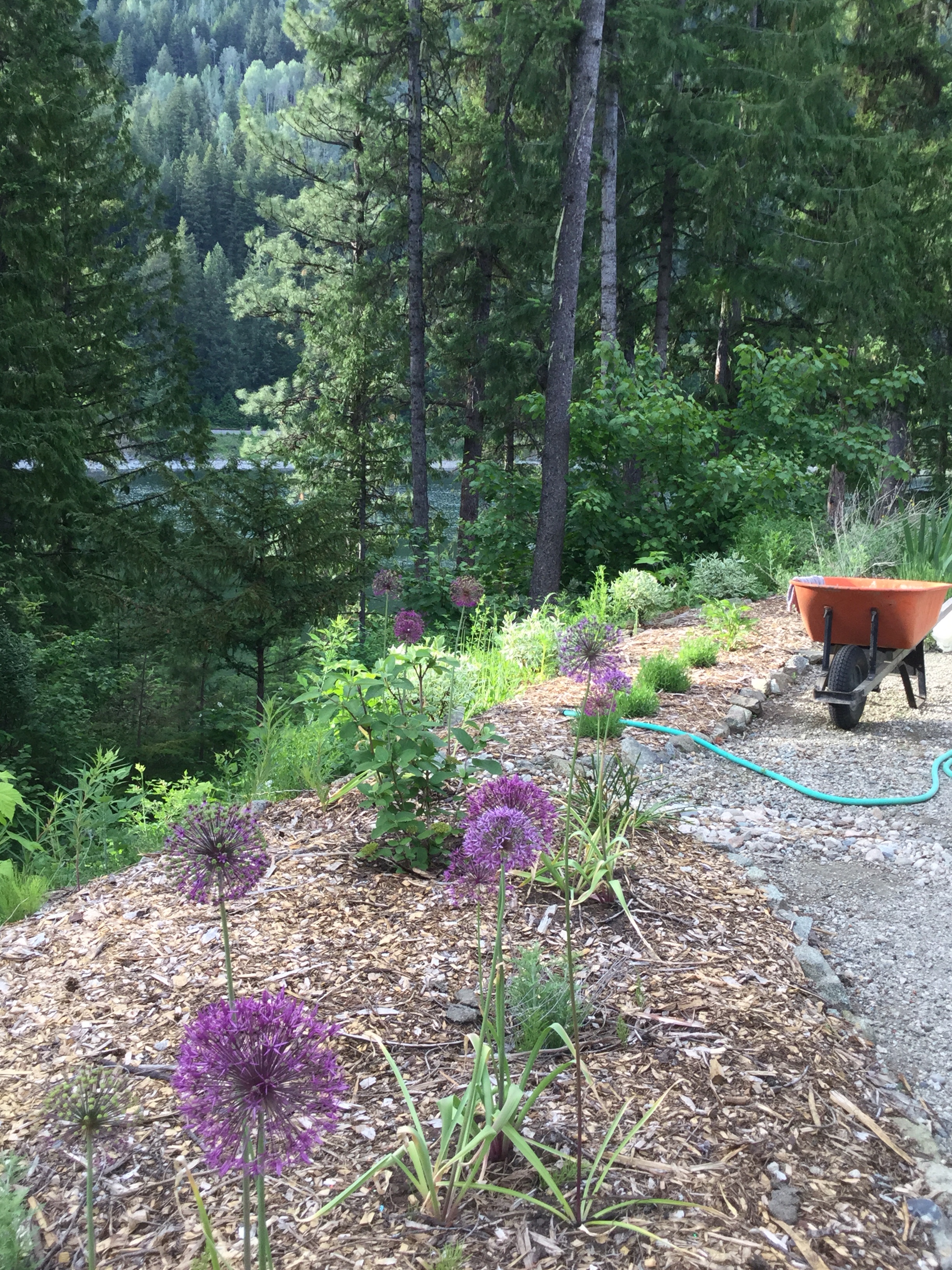


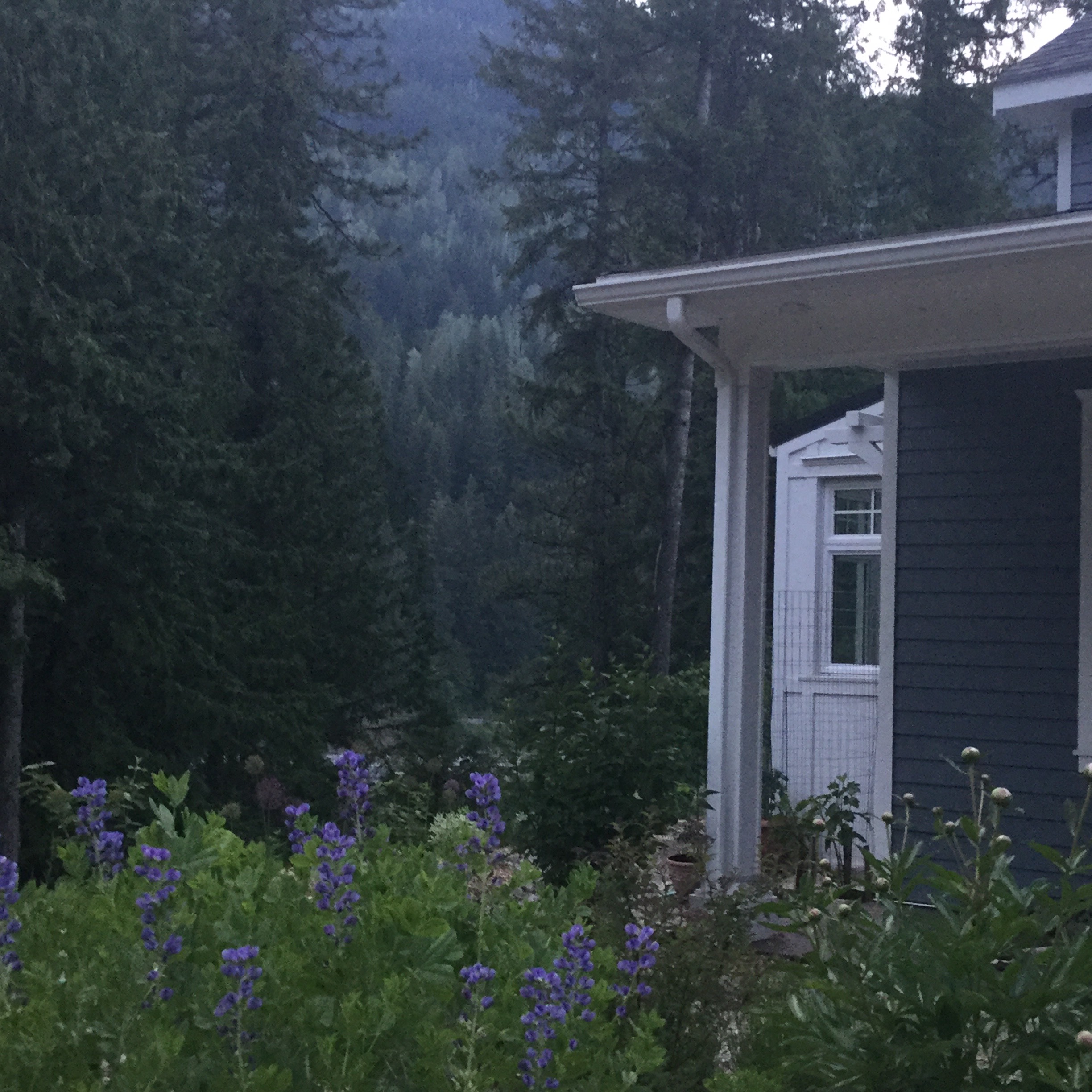
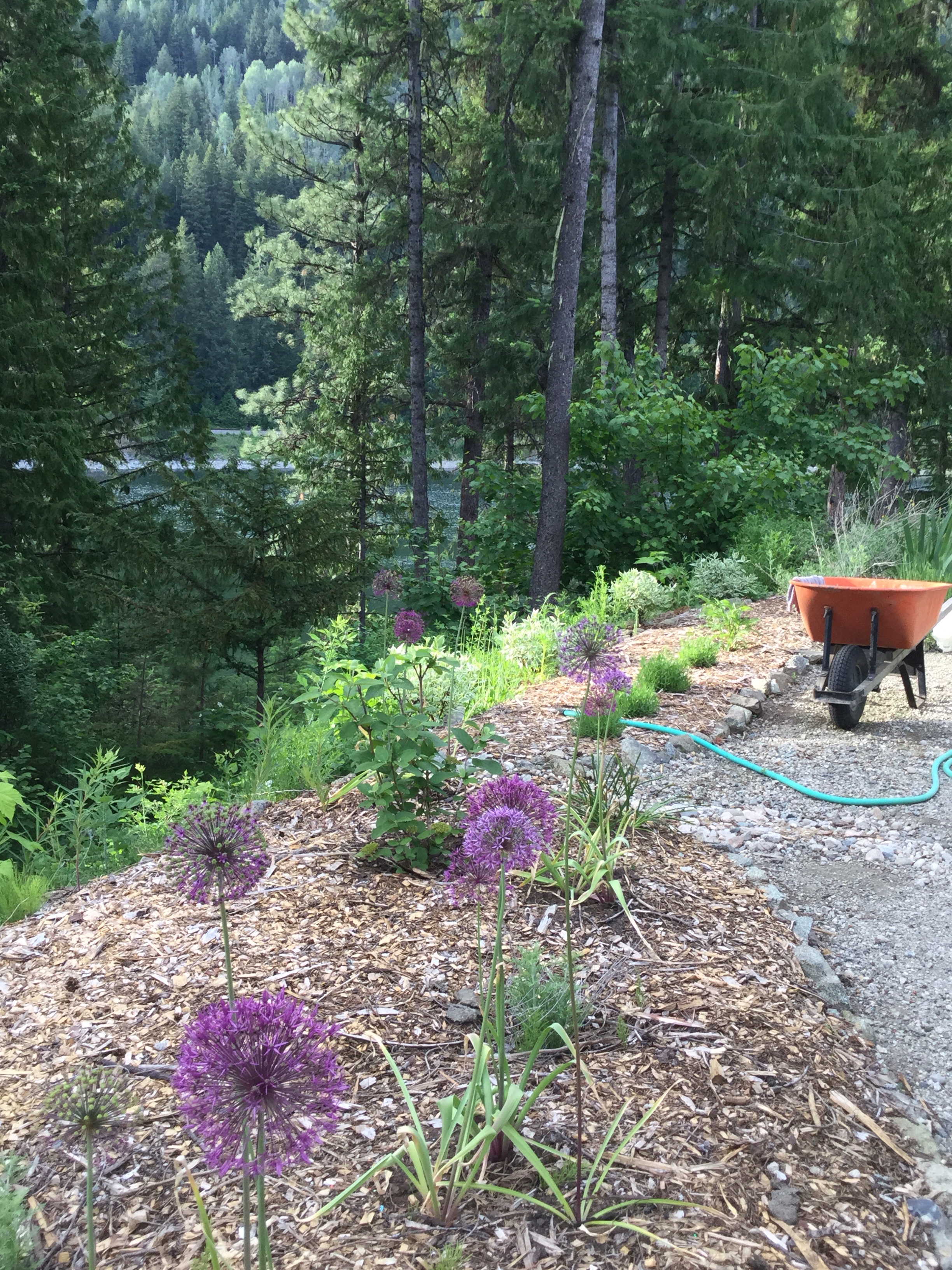
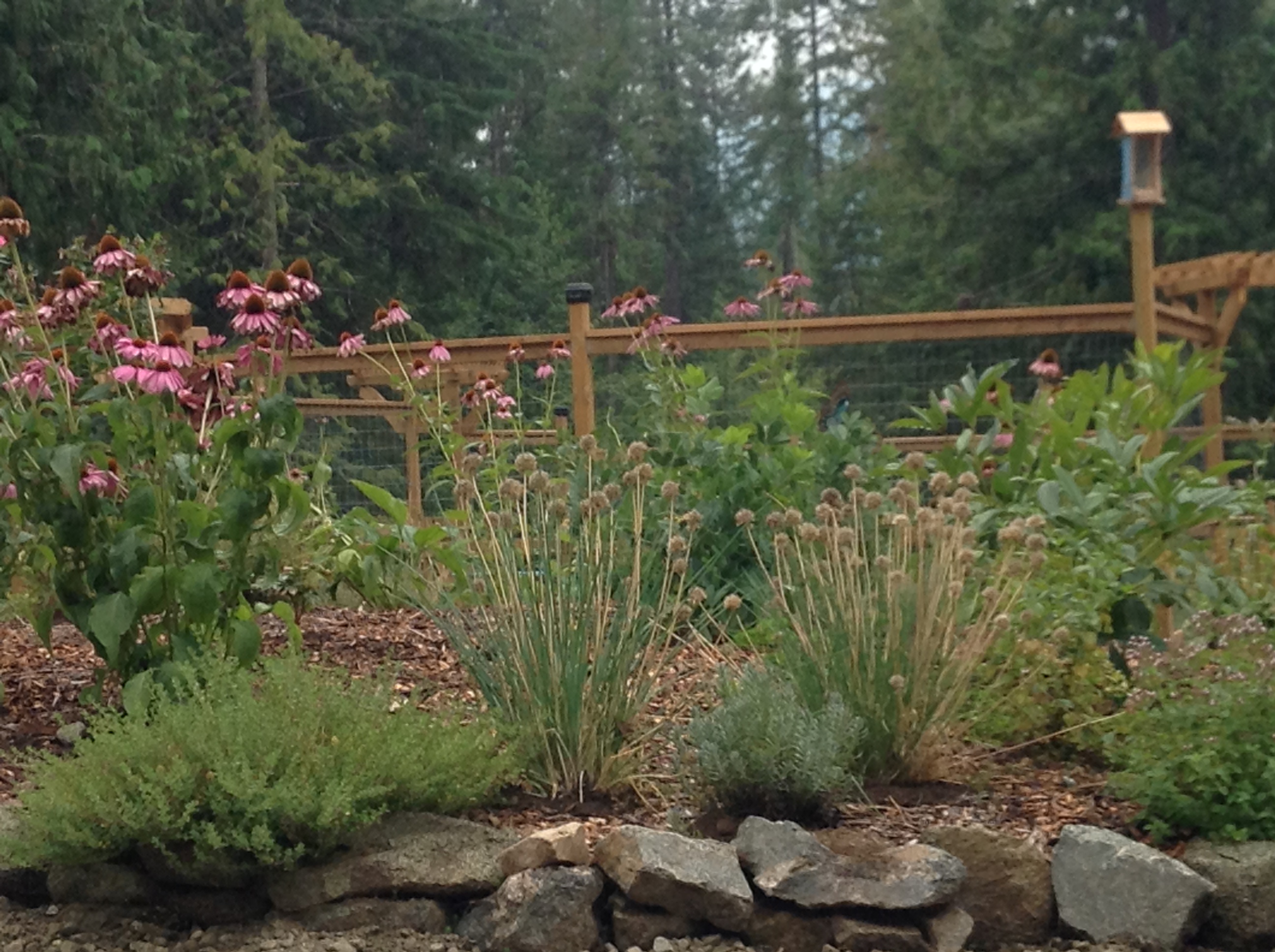
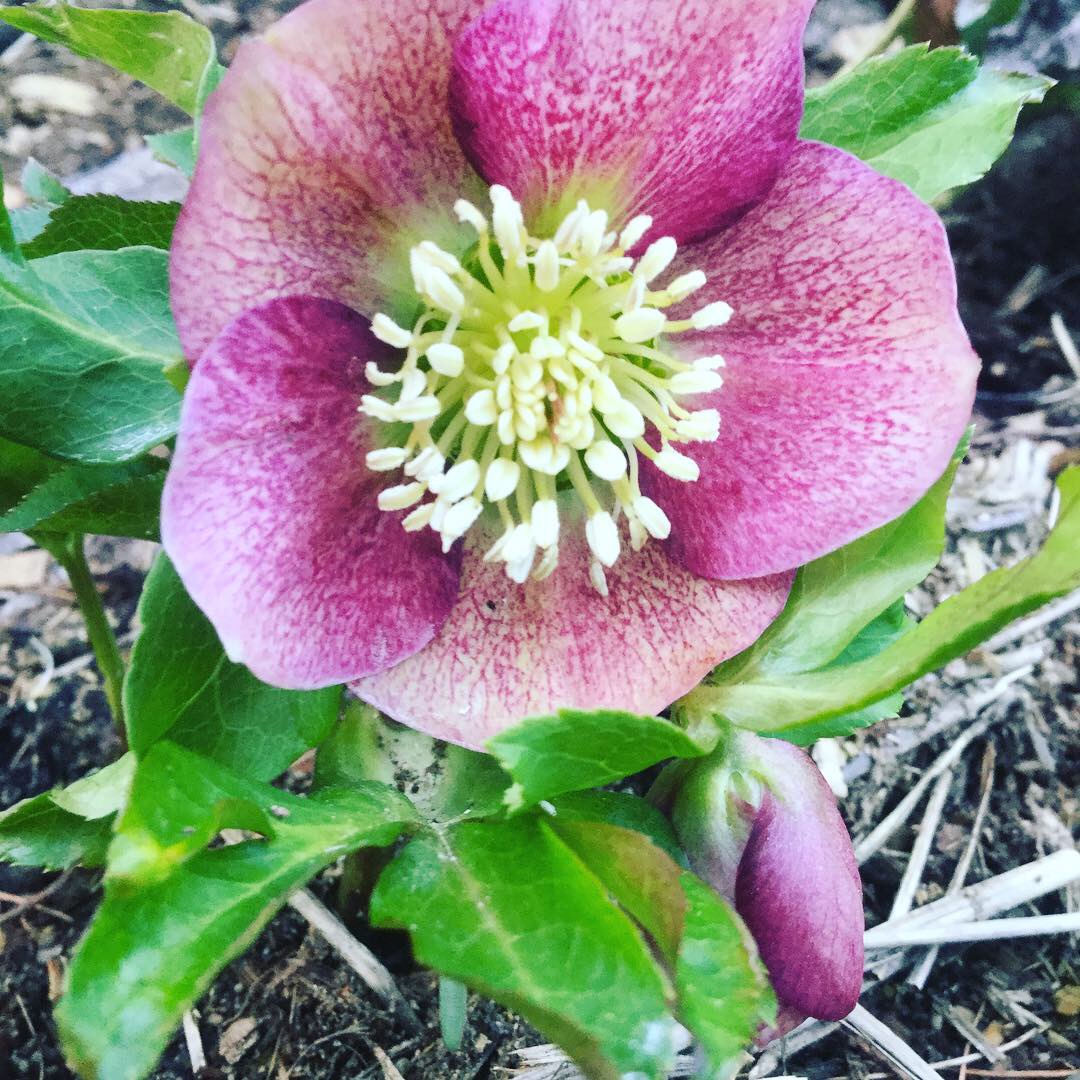




I just love perennial gardens! Yours are lovely.
Thanks for a great article on designing perennial gardens, and for sharing on and linking to our Farm Fresh Tuesdays Blog Hop! I have chosen your article to be Featured in our Blog Hop next week! Feel free to grab the FEATURED badge and add it to your post! 🙂
Thanks for sharing (and linking!) your article on the Farm Fresh Tuesdays Blog Hop! I have chosen it to be featured on next weeks Blog Hop! Feel free to swap your badge out for the “Featured” badge available in my Blog Hop post! 🙂
Your perennial flowers are so beautiful! Thanks for sharing your talent on Farm Fresh Tuesdays! I’m excited to see what you share today!
We have several little perennial gardens around our homestead. Not only for their attractive nature, but for bee forage as well. Thank you for sharing on the Family Homesteading and Off the Grid blog hop:)